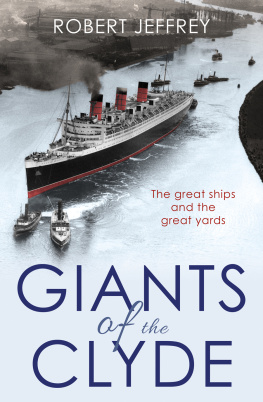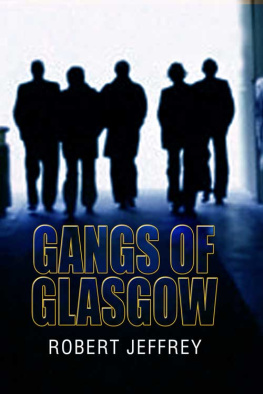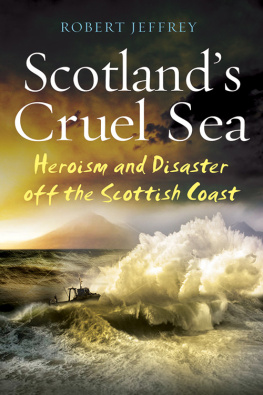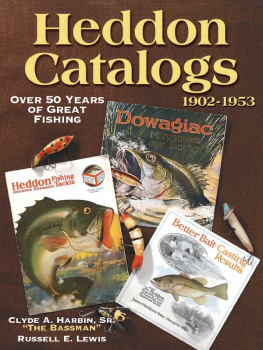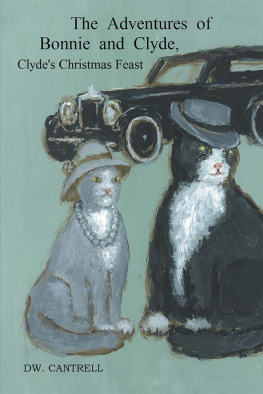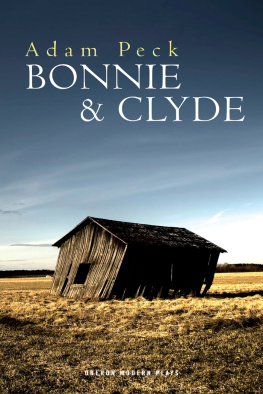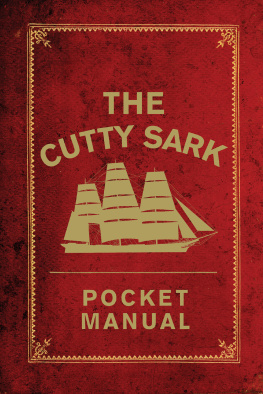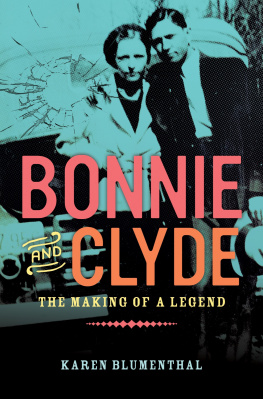

By the same author:
Scotland s Cruel Sea
Peterhead: the Inside Story of Scotlands Toughest Prison
Gentle Johnny Ramensky
The Barlinnie Story
A Boxing Dynasty: The Tommy Gilmour Story (with Tommy Gilmour)
Real Hard Cases: True Crime from the Streets (with Les Brown)
Glasgows Godfather
Gangs of Glasgow
Glasgow Crimefighter: The Les Brown Story (with Les Brown)
Glasgows Hard Men
Blood on the Streets: The A-Z of Glasgow Crime
The Wee Book of Glasgow
The Wee Book of the Clyde
Crimes Past: Glasgows Crimes of the Century
Co-authored with Ian Watson:
Clydeside People and Places
The Herald Book of the Clyde
Doon the Watter
Scotlands Sporting Heroes
Images of Glasgow
First published 2017
by Black & White Publishing Ltd
29 Ocean Drive, Edinburgh EH6 6JL
www.blackandwhitepublishing.com
This electronic edition published in 2017
ISBN: 978 1 78530 143 8 in EPub format
ISBN: 978 1 78530 074 5 in paperback format
Copyright Robert Jeffrey 2017
The right of Robert Jeffrey to be identified as the authors of this work has been asserted by them in accordance with the Copyright, Designs and Patents Act 1988.
All rights reserved.
No part of this publication may be reproduced, stored in a retrieval system, or transmitted in any form, or by any means, electronic, mechanical, photocopying, recording or otherwise, without permission in writing from the publisher.
A CIP catalogue record for this book is available from the British Library.
Ebook compilation by Iolaire, Newtonmore
Contents
Ian Bruce, Tom Bone, Sammy Gilmore, Albert Smart, Ronald Ross, Ray Bulloch, Scott Whiteford, staff of Mitchell Library, staff of Denny Ship Tank Museum, staff of Scottish Maritime Museum Irvine, Dr Grant Jeffrey, Dr Stuart Jeffrey, Marie Jeffrey, Jim Campbell, Stuart Irvine, John Riddell, Jim Williamson, Ian McAdam, Stuart Fyfe, David Frost, Lise Jeffrey. And many old timers who worked in the yards, sailed on the vessels and loved to talk of the Clyde.
Giants of the Clyde is dedicated to Alex Jeffrey, freethinker, music maker and Clyde enthusiast.
This book makes no wild claims to be comprehensive to do so would call for many volumes and many years spent scouring around in dusty archives. Instead it is an occasionally personal, and perhaps idiosyncratic, selection of tales that appeal to a life-long Clydesider, just one of a huge tribe of boat daft Scots of all ages who have lived near the river. In it are stories of famous ships and the yards, large and small, that built them, that hopefully give something of the flavour of a unique place and its peoples, the folk who made the ships that made a mark on the world.
1
Smoke, Noise, Clamour, Clatter and the Ding Dong of Hammer on Metal
It all began in earnest around 1796 with the opening of the Monkland Canal which provided Glasgow with good access to the iron ore and coal mines of Lanarkshire. At the same time the Clyde itself began to be dredged and deepened allowing shipbuilding almost in the city centre, in Govan on the south bank and with yards like Yarrows and A. & J. Inglis on the north. It was the start of one of the most fascinating and life transforming episodes in industrial history the birth of a legend, and an accolade that became around the world a byword for supreme maritime craftsmanship, Clydebuilt.
Today a couple of existing replica ships one at Port Glasgow and the other an exhibit on the Monkland Canal itself mark important episodes in shipbuilding history. Twenty-three years after the opening of the canal what some say is the worlds first iron-hulled boat was built at Calderbank in Lanarkshire. This was the iron riveted Vulcan and its success helped kick-start a shipbuilding revolution on the Clyde. But in its early days Vulcan s design was too much for the local barge men, soaked in the history and traditions of wooden hulls, to handle. They mocked it as a false dawn and some even predicted that it would never float! But the 63-feet horse-drawn barge, named after the Roman god of fire, was a success, working on the Forth and Clyde canal for more than fifty years ferrying coal, ironstone and passengers. A replica was built for the Glasgow Garden Festival in 1988 and for a time was a feature of the Summerlee Museum of Scottish Industrial Life in Coatbridge.
Another replica that is a must-visit for anyone with an interest in the Clydes history and its effect on the development of shipping worldwide is that of the Comet . This little vessel ran the first commercially successful steamboat service in Europe in August 1812. The replica, which makes industrial Port Glasgow an unlikely attraction for tourists, was constructed in 1962 by shipyard apprentices to mark the 150th anniversary of its historic first voyage.
Not even the most enthusiastic residents could claim that Port Glasgow is easy on the eye. Indeed the replica, which has been kept in excellent condition for more than fifty years, is in a frankly shabby and decaying town centre surrounded by a petrol station, a shopping complex, a motorway, and industrial units. However, the display itself is well done and a credit to an unpretentious working town. The view in the winter and spring across the river to the snow-flecked Arrochar Alps and Ben Lomond is impressive, if you can ignore the immediate surroundings.
Many an industrial or maritime landmark is graced with a tiny plaque explaining little to the visitor. Not so in the case of the Comet . There is a lot of information placed next to the little black and red vessel, especially a handsome steel tablet full of interesting facts. The giants of the river that came from Port Glasgow and shipyards up and down the Clyde, to the very centre of Glasgow, may have dwarfed this little steamship, but it was undoubtedly the start of something very big indeed.
The steel tablet explains the background to the construction of the Comet although it does not point out the interesting fact that the choice of name for the vessel reflects the astronomical sight of the year of its birth, 1811 a spectacular comet that dominated the night sky for more than a year. The remarkable man with the big idea of building a commercial passenger steamer to ply the Clyde was Henry Bell who owned a hotel and swimming baths in Helensburgh (to be seen across the river from where the replica now lies).
Some think that the idea of the Comet came from a little steam engine that Bell had installed to pump seawater into the swimming baths. Like all true entrepreneurs Bell was on the lookout to develop his enterprises and make more money. He had been in contact with the famous engineer Robert Fulton and was interested in steam-propelled boats. Wherever the notion for a passenger steamship came from, Bell chose wisely when he looked for a builder. In John and Charles Wood, of John Wood & Company, the Port Glasgow shipbuilders, he found a company with an enviable reputation for quality work in the sailing ship trade. In 1811 work began on a tiny paddle-powered steam vessel, just 45-feet long with a beam of 10 feet. The funnel for the steam engine was tall and narrow and served to carry a sail which in favourable winds the engine was of only four horse power would aid speed and save coal.

